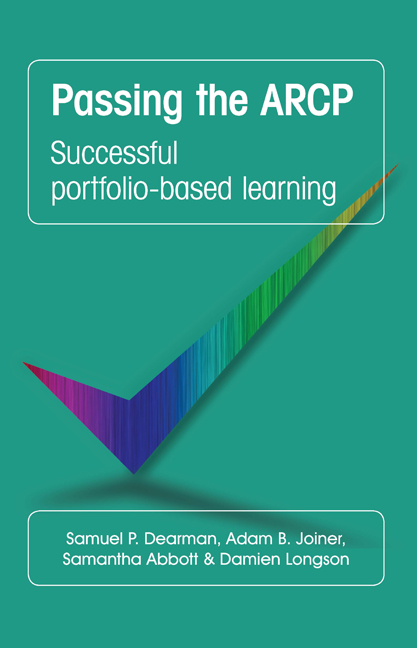Book contents
- Frontmatter
- Contents
- Authors
- List of figures
- Foreword
- Preface
- Acknowledgements
- List of abbreviations
- How to use this guide
- 1 Quick reference guide
- 2 What is a portfolio?
- 3 Lessons learned so far
- 4 Organising the portfolio
- 5 Managing your workplace-based assessments
- 6 Reflective practice and self-appraisal of learning
- 7 Audit and research
- 8 Teaching
- 9 Psychotherapy experience
- 10 Management and leadership experience
- 11 Appraisal reports, planning meetings and educational objectives
- 12 Other experiences, achievements and documents
- 13 The future of portfolios
- Index
6 - Reflective practice and self-appraisal of learning
- Frontmatter
- Contents
- Authors
- List of figures
- Foreword
- Preface
- Acknowledgements
- List of abbreviations
- How to use this guide
- 1 Quick reference guide
- 2 What is a portfolio?
- 3 Lessons learned so far
- 4 Organising the portfolio
- 5 Managing your workplace-based assessments
- 6 Reflective practice and self-appraisal of learning
- 7 Audit and research
- 8 Teaching
- 9 Psychotherapy experience
- 10 Management and leadership experience
- 11 Appraisal reports, planning meetings and educational objectives
- 12 Other experiences, achievements and documents
- 13 The future of portfolios
- Index
Summary
Central to personal development and demonstrating one's ability to learn from experience is the ability to reflect. Reflective practice or self-appraisal of learning notes present a standardised method of recording experience and personal reflections of what was learned and how this might inform personal development.
How to record reflective practice
Much like other parts of the portfolio, the recording and presenting of reflective practice should follow a standardised format that presents a summary of each aspect of reflective practice. Trainees and the ARCP panel need to understand the experience, learning and reference to any developmental needs. The actual form used is not important but trainees should ensure they record the following:
• a brief description of the experience, assessment or learning situation
• any feedback received (e.g. from a supervisor, a patient, a colleague)
• a summary of personal reflections – what was learned, what went well, what could have gone better as well as the emotional impact of the situation
• a note of any actions needed to take as a result of feedback and/or reflection (i.e. professional development).
It should be remembered that reflection or self-appraisal happens, or should happen, all the time and in many different contexts. Therefore, trainees should ensure they record reflective practice across a broad range of clinical and non-clinical domains. Examples include: ethical dilemmas, times when another team member dealt with a difficult situation well, when personal decision-making could have been better, when and why it was felt that a good protocol was vital in clinical audit, etc. An example of a reflective note completed in an informative and useful way is provided later in the chapter.
The difficult question of where to file reflective notes
Broadly speaking, trainees have three choices as to which section of the portfolio to file reflective notes in.
Method 1: A separate section titled ‘reflective practice’
Filing reflective notes in a dedicated section will result in a number of forms recording thoughts concerning a variety of experiences and learning situations. The key therefore would be to make this section orderly and logical so that the information does not become unmanageable, missed and even uninteresting. To avoid this pitfall, the section could begin with its own contents page, which categorises learning experiences in a logical way.
- Type
- Chapter
- Information
- Passing the ARCPSuccessful Portfolio-Based Learning, pp. 33 - 38Publisher: Royal College of PsychiatristsFirst published in: 2017

